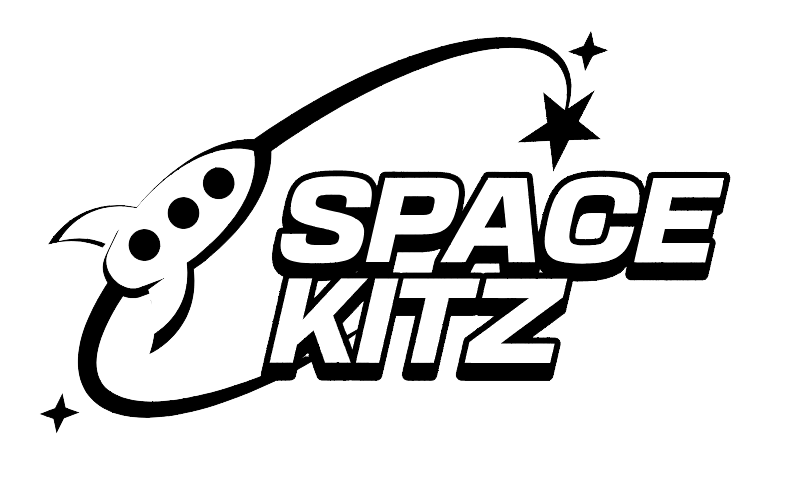How High School Students Are Tracking Hurricane Erin in Real Time with Space Kitz Signal Hunters
When a Category 5 hurricane forms in the Atlantic, the world’s attention quickly turns to the latest updates from NOAA, NASA, and the National Hurricane Center. But this time, something extraordinary is happening: high school students across the country are tracking Hurricane Erin themselves — live, in their classrooms — thanks to the Signal Hunters program from Space Kitz.
This hands-on STEM experience isn’t just about watching weather.
It’s about capturing real satellite data, decoding transmissions from space, and analyzing storm development like professional meteorologists. For science and STEM teachers, it’s a transformative way to engage students with authentic space-based science.
From the Classroom to Space: How It Works
The Signal Hunters program equips students with a satellite ground station kit that connects directly to NOAA’s GOES weather satellites. Using software-defined radio (SDR) and a small dish antenna, students download live HRIT and LRIT satellite data straight from orbit — no internet, no middleman.
This means when students tracked Hurricane Erin, they weren’t looking at someone else’s screenshots. They were receiving the exact same imagery and atmospheric data used by meteorologists to forecast and model the storm.
Teachers report that students are particularly amazed by:
Full-disk Earth images showing the swirl of Hurricane Erin across the Atlantic.
Water vapor imagery that reveals the storm’s inner moisture and energy.
Infrared bands showing cloud-top temperatures and storm intensity.
Close-up regional views that let them see Erin’s eye wall forming and reforming.
Why This Matters for STEM Education
For high school students, tracking Hurricane Erin isn’t a passive activity — it’s a real-world STEM investigation.
Students are applying concepts from:
Physics – electromagnetic spectrum, satellite orbits, and geostationary motion.
Earth Science – hurricane formation, atmospheric dynamics, and climate systems.
Computer Science – decoding binary data, using SDR software, and creating animations of satellite imagery.
Engineering – assembling their ground station hardware, aligning the antenna, and troubleshooting reception.
Instead of learning from a textbook, students are living the science as it unfolds, connecting classroom lessons to breaking news in meteorology.
Tracking Hurricane Erin: A Case Study
When Hurricane Erin intensified into a Category 5 storm, Signal Hunters classrooms captured imagery that showed:
The rapid eye wall replacement cycle, visible as the storm strengthened.
The spiraling outer bands, stretching hundreds of miles and threatening nearby islands.
The storm’s movement across the Atlantic, providing a clear example of how hurricanes interact with atmospheric steering currents.
Students compared their raw data to the National Hurricane Center’s forecasts and discovered just how critical satellite-based observations are for predicting hurricane tracks and impacts.
Engaging Students Through Real-World Relevance
Science teachers often face the challenge of answering the question: “When will I ever use this?” Programs like Signal Hunters solve that problem.
By tracking Hurricane Erin in real time:
Students see the direct application of STEM skills to global issues like extreme weather.
They experience the thrill of discovery when their satellite data matches what professionals are reporting.
They gain critical thinking and data literacy skills by analyzing satellite imagery and connecting it to weather patterns.
This is project-based learning at its best — authentic, relevant, and unforgettable.
Bringing Signal Hunters to Your Classroom
Space Kitz designed the Signal Hunters program to be turnkey for teachers:
Aligned with NGSS (Next Generation Science Standards) and STEM curriculum goals.
Complete with lesson plans, technical support, and training.
Scalable for use in classrooms, after-school programs, or STEM clubs.
For high school science and STEM educators, Signal Hunters transforms your classroom into a space science lab. Your students won’t just be reading about satellites and hurricanes — they’ll be operating their own satellite ground station and tracking storms live from space.
Inspiring the Next Generation of Scientists
Hurricane Erin is a powerful reminder of the importance of space-based weather monitoring. Through the Signal Hunters program, students are not just learning about science — they’re doing science. They’re stepping into the shoes of meteorologists, engineers, and data scientists, all while developing skills that will prepare them for careers in STEM.
For teachers, the impact is clear: real data, real relevance, and real excitement in the classroom.
If you want your students to experience this level of engagement, now is the perfect time to explore how Signal Hunters from Space Kitz can transform your STEM program.
Looking for Funding to Bring Signal Hunters to Your Classroom?
We know that many teachers are eager to bring cutting-edge STEM experiences like Signal Hunters to their students, but funding can be a hurdle. That’s why we’ve put together a detailed guide:
👉 STEM Grants for Teachers: Funding Space Education and Classroom Technology
This resource highlights national and regional grant opportunities, tips for writing strong proposals, and funding pathways specifically for STEM classrooms, space education, and technology integration. If you’re exploring how to make a project like Signal Hunters possible for your school, this guide is a great place to start.




